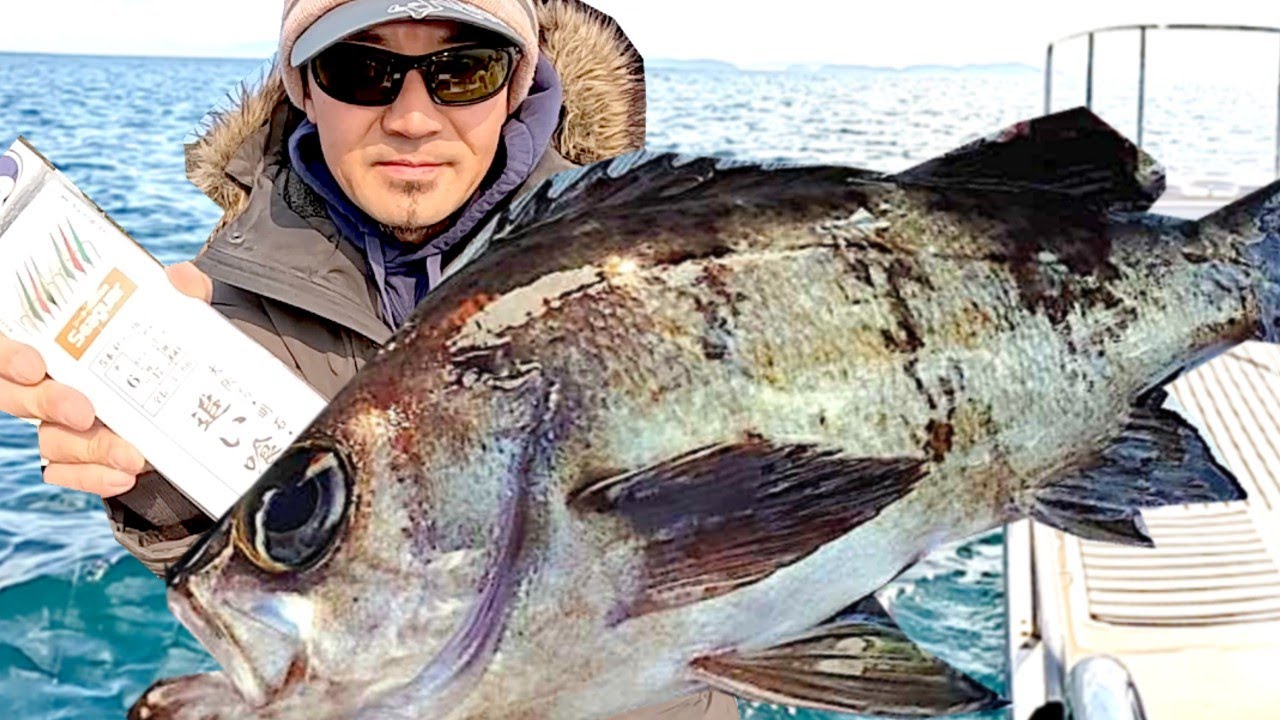A Multi-Stage Fishing Adventure: From the Depths to the Kitchen
Hey, welcome back to another episode of Fishing Life Awaji! I’m Daiki. It’s early April, and with the weather getting warmer, it’s the perfect time to get out on the water. Today’s trip is a multi-part adventure, starting in the deepest part of Osaka Bay and moving to shallower waters as the day progresses.
Part 1: Deep Fishing at Slack Tide
The day begins before dawn at the deepest spot in Osaka Bay, around 550 feet (160 meters). This area has a powerful current, making it fishable only during “slack tide,” the brief period when the water stops moving. My plan is to take advantage of this short window to target Black Croaker.
The technique is simple: using an electric reel to manage the depth, I drop a three-hook rig baited with mackerel straight to the bottom and wait. On the very first drift, I get a hit and bring up a double catch of Black Croaker! This fatty, white-meat fish is a prized catch, tasting even better than sea bass and perfect for sushi. The “rush hour” was on, and I managed to land several more, including a massive 50 cm specimen—one of the biggest I’ve ever caught.
Part 2: An Unexpected Battle
With enough Black Croaker, I moved on to target my main goal for the day:
Mebaru (Black Rockfish). The season is just beginning, as these fish become most active when the water temperature hits around 10°C, and today it was still a cool 8°C. While searching for them, I hooked something much heavier.
The fight was thrilling. I was using a super thin 6 lb test sabiki line, so I had to be incredibly gentle. The surprise catch was a type of filefish called
Umazura-hagi, a delicious fish known for its large, rich liver.
After that excitement, I managed to catch a few of the target Mebaru, enough to take home for a classic Japanese dish.
Part 3: An Incredible Home-Cooked Feast
Back in the kitchen, it’s time to prepare the day’s diverse catch. The menu is ambitious, featuring multiple traditional Japanese preparations.
1. Simmered Black Croaker Eggs
The Black Croakers I caught were full of delicious roe. I simmered them for about 20 minutes in a classic Japanese broth made from sake, mirin, soy sauce, water, ginger, and sugar. The result was a gorgeous and flavorful delicacy.
2. Kelp-Cured Red Snapper Sashimi (Kobujime)
This technique infuses sashimi with a deep umami flavor.
- Preparation: A fillet of Red Snapper is wrapped tightly in a sheet of kelp that has been moistened with sake.
- Aging: The package is rested in the fridge for half a day. This process firms up the meat and gives it an incredible sweetness.
3. Simmered Mebaru (Black Rockfish)
This is a popular home-cooked dish in Japan.
- Preparation: The whole fish is scaled, gutted, and salted for 10 minutes.
- Cooking: It’s simmered for about 10 minutes in a standard Japanese sauce of equal parts soy sauce, sake, and mirin, along with water, dashi, and sugar.
4. The Star of the Show: Filefish Sashimi with Liver Paste (Kimo Joyu)
The filefish is a true delicacy, primarily because of its huge, edible liver.
- Preparation: This unique fish has two layers of skin; the tough outer layer is peeled off first. The process is surprisingly satisfying. Inside, you find the prize: the liver. The head can be easily broken off by hand. The fillet is then sliced very thinly for sashimi.
- Kimo Joyu (Liver Soy Sauce): The liver is washed in saltwater, mashed into a paste, and mixed with soy sauce and a little mirin.
- Serving: The sashimi is then eaten by dipping it into this incredibly rich and flavorful liver sauce. Since the fish was just caught this morning and properly handled (ikejime), the liver is fresh enough to be eaten raw.
From a deep-sea hunt to a multi-course culinary journey, this was truly a day to remember.

